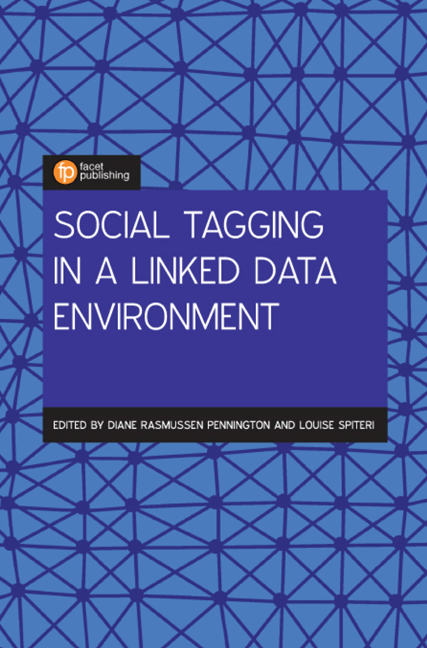Book contents
- Frontmatter
- Contents
- List of figures and tables
- Contributors
- 1 Introduction: the continuing evolution of social tagging
- 2 Tagging the semantic web: combining Web 2.0 and Web 3.0
- 3 Social tags for linked data with Resource Description Framework (RDF)
- 4 Social tagging and public policy
- 5 Hashtags and library discovery systems
- 6 Social information discoverability in Facebook groups: the need for linked data strategies
- 7 #FandomCommunication: how online fandom utilises tagging and folksonomy
- 8 Keys to their own voices: social tags for a dementia ontology as a human right
- 9 Social tagging and the enterprise: an analysis of social tagging in the workplace
- 10 Use and effectiveness of social tagging recommender systems
- Index
7 - #FandomCommunication: how online fandom utilises tagging and folksonomy
Published online by Cambridge University Press: 01 June 2019
- Frontmatter
- Contents
- List of figures and tables
- Contributors
- 1 Introduction: the continuing evolution of social tagging
- 2 Tagging the semantic web: combining Web 2.0 and Web 3.0
- 3 Social tags for linked data with Resource Description Framework (RDF)
- 4 Social tagging and public policy
- 5 Hashtags and library discovery systems
- 6 Social information discoverability in Facebook groups: the need for linked data strategies
- 7 #FandomCommunication: how online fandom utilises tagging and folksonomy
- 8 Keys to their own voices: social tags for a dementia ontology as a human right
- 9 Social tagging and the enterprise: an analysis of social tagging in the workplace
- 10 Use and effectiveness of social tagging recommender systems
- Index
Summary
Introduction
Tags are a form of linked data familiar to those of us who use the internet for social media. These pieces of metadata are usually assigned to posts on social media to help users make sense of the content (Golder and Huberman, 2006), in a way that is generally easy to understand and emulate. It is difficult to use a social media platform like Facebook, Twitter or Tumblr and not come across tagging in one form or another. Hashtags can sprout up amongst many important events or moments, like #blacklivesmatter or #yesallwomen. Generic tags that have very little indication of meaning or importance can also be added to statuses for fun, like #ThursdayThoughts. These are some of the most common uses of social tagging, but they are far from the only examples of social tagging being used in online spaces.
Although the developments leading to modern, western fandom vary according to country (Cuntz-Leng and Meintzinger, 2015), it is generally accepted that fandom as we now would recognise it largely came about in the late 1960s to early 1970s, when the original series of Star Trek (1966) was airing. Star Trek has had a varied following over the years and still attracts many kinds of viewers (Frazetti, 2011), but Star Trek was and is a byword for geek culture. The incredible devotion and love many Star Trek fans have for the series has led to conventions, collectables, and works of art. Fanfiction was a popular way for Star Trek fans to share their own interpretations of the show's characters by creating transformative works of fiction. Some of the oldest examples of modern fanfiction were created by the Star Trek fandom (Verba, 2003), and were copied and shared in person. With ease of access to the internet becoming more widespread, much of fandom now takes place in online spaces, made up of internet based communities. In spite of this massive technological shift, fanfiction and fandoms have changed very little. Put simply, fandoms today are online spaces dedicated to fans, many of whom produce content for their particular interests and share it online.
- Type
- Chapter
- Information
- Social Tagging for Linking Data Across Environments , pp. 131 - 150Publisher: FacetPrint publication year: 2018



